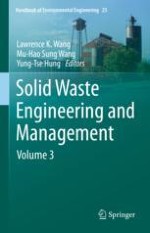2022 | OriginalPaper | Chapter
2. Rubber Tire Recycling and Disposal
Authors : Noor Ainee Zainol, Ahmad Anas Nagoor Gunny, Hamidi Abdul Aziz, Yung-Tse Hung
Published in: Solid Waste Engineering and Management
Publisher: Springer International Publishing
Activate our intelligent search to find suitable subject content or patents.
Select sections of text to find matching patents with Artificial Intelligence. powered by
Select sections of text to find additional relevant content using AI-assisted search. powered by
